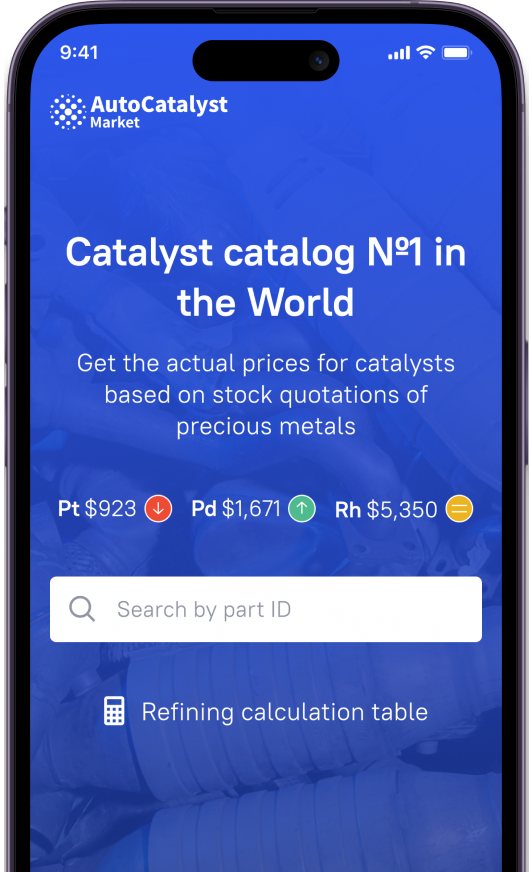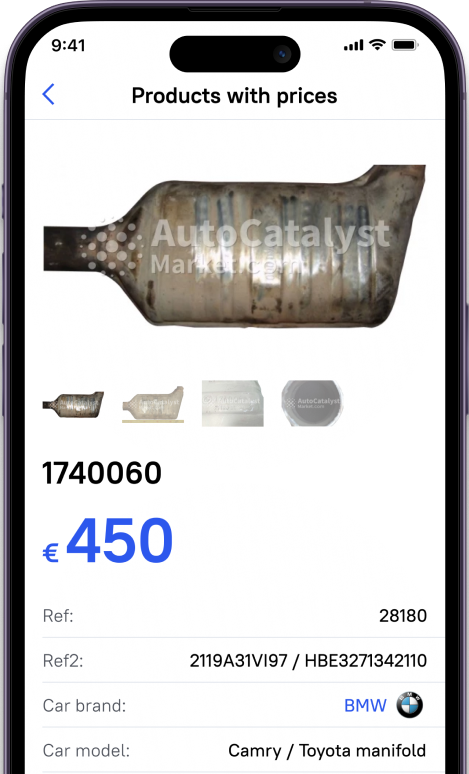- Catalytic converter’s impacto on engine
- Why do I need indicators on my car dashboard?
- How do you know if there's a problem with the catalytic converter?
- What error codes are associated with catalytic converter problems?
- What to do if you see these codes?
- What to do with the used catalytic converter after replacement?
Catalytic converters are meticulously crafted to alleviate the adverse consequences of the combustion process in an internal combustion engine, which predominantly relies on gasoline or diesel fuel. Comprehending the overarching significance of catalytic converters and their interconnection with the internal combustion engine is fundamental for recognizing their role in contemporary automotive technology.
Contained within the catalytic converter is a lattice-like framework adorned with precious metals like platinum, palladium, and rhodium. These metals are esteemed for their catalytic properties, expediting the transformation of noxious exhaust fumes into more innocuous compounds.
Catalytic converter’s impacto on engine
The Catalytic converters impact on the internal combustion engine is twofold. Firstly, they introduce specific constraints on the engine's combustion procedure, necessitating precise regulation of the air-fuel mixture and combustion conditions. The systems related to engine management must fine-tune fuel distribution, ignition timing, and air intake to ensure the catalytic converter's efficient operation.
Secondly, catalytic converters contribute to a more ecologically conscious and sustainable automotive sector. They enable internal combustion engines to be a more environmentally friendly and conscientious technology, diminishing their ecological footprint. This has gained increasing significance in the context of mounting apprehensions about air quality, climate shifts, and the pursuit of more environmentally responsible transportation alternatives.
Why do I need indicators on my car dashboard?
Indicators on your car's dashboard, especially on modern vehicles equipped with monochrome displays, are essential for providing real-time information about your vehicle's performance and status. These indicators serve multiple critical purposes in ensuring your safety, maintaining the vehicle's health, and enhancing the driving experience.
There are 5 main indication categories:
- Safety indicators warn you of issues such as low tire pressure, engine overheating, or brake system problems.
- Maintenance Indicators are for such routines as oil changes, fuel capacity
- Efficiency indicators present information on how fuel-saving conditions and assist in driving behavior.
- Performance-related data that includes speed, engine revolutions per minute, and gear position.
- Environmental impact for emissions control and eco-friendly practices
How do you know if there's a problem with the catalytic converter?
If you see the “Check Engine” light on your dashboard, and this indicator stays illuminated it signifies an issue with the emissions control system, which may include the catalytic converter.
Besides just that very indication you can understand having issues with catalysts in other ways. For instance, a malfunctioning catalytic converter can lead to decreased engine performance, which you can define by reduced acceleration and power. If you notice a loss of power or difficulty in maintaining speed, it may be a sign of catalytic converter trouble. Usually, this issue goes along with unusual noises such as rattling or hissing coming from the device’s area which could be a sign of deterioration.
A less obvious case is that when you notice increased fuel consumption, it may be caused by a faulty converter as the gasses struggle to process efficiently through the catalyst and increase pressure.
The best way to stay in control is to perform an emission test on the car service to reveal any issues according to catalyst maintenance and state.
What error codes are associated with catalytic converter problems?
Here is a listo of specific error codes that indicates the information on the failure related to your catalytic converter.
- P0420 and P0430 codes
These codes are to indicate that the exhaust system efficiency is below its threshold. P0420 stays for the cylinder 1-side and P0430 for the 2nd.
- P0421-0P423 and P0431-P0433
These codes are variations of P0420 and P0430, indicating specific issues related to the warm-up catalyst and the efficiency of the catalyst system for each bank.
- P0424 and P0434
These codes may refer to a temperature sensor issue within the catalytic converter, signaling that the exhaust gas temperature is out of the expected range.
- P0425 and P0435
These codes are related to heater control circuit problems in the oxygen sensors before the cat converters.
- P0427 and P0437
Warm-up circuit issues for cold starts
- P0428 and P0438
Problems associated with possible temperature sensors for both banks in the cat converter.
What to do if you see these codes?
Code’s specific may vary depending on the car's make. They are retrieved from your vehicle’s onboard diagnostic system and to see that you need a diagnostic scan tool (catalyst monitor) for manual service or visit a special car service if you are unable to do it manually.
Considering the specifics of these computer commands it is better to double-check your vehicle’s manual or enlist the help of a qualified mechanic to diagnose the issue on service.
What to do with the used catalytic converter after replacement?
If you get to converter replacement you should know how to utilize the old one properly. Many people just get rid of them without knowing two essential things. The 1st thing is that the cat converter still retains the value inside even after failure. The second thing is that the common way of old cats' disposal actually harms the environment, hence it is better to recycle them to benefit from both the environmental pollution precaution and selling old converters for money.
As cat converter includes catalysts made of platinum palladium and rhodium – these are precious metals that are still there, even if the cat does not work anymore. You can save money on purchasing a new one via recycling that is meant to extract these precious metals for further applications in medicine and catalytic converter manufacturing and that is better than disposal.






































